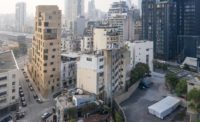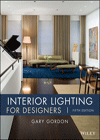Lighting Beirut Architecture






Architects & Firms
Lebanon
As in any great film, Beirut’s illuminated downtown reveals no unintended harsh shadows, no light sources or fixtures. Its Ottoman-style and French-mandate buildings and their Arabesque, Art Nouveau, and Art Deco details subtly emerge with strokes and washes of what might be moonlight. It’s all an illusion, except the illusion hasn’t been created for the ephemeral moment of the shot.
Lighting Beirut Architecture, an ambitious project designed by the French lighting-design firm Light Cibles, was a first step in an ongoing transformation of the city’s downtown nightscape. The initiative, directed by Solidère, the real-estate developer responsible for the Beirut Central District and its post-civil-war reconstruction since 1994, was conceived in 2004. It was put on hold after the assassination of former Lebanese prime minister Rafik Hariri in February 2005, then revived in 2009, in part to spotlight Rafael Moneo’s Beirut Souks, a new shopping complex there.
Essentially, Light Cibles principal Emmanuel Clair and his team developed a scheme whereby the facades of 28 architectural landmarks, religious buildings, and the Souks would be illuminated every night by 147 custom-designed, high-definition projectors. Mounted on adjacent rooftops, these are protected by housing designed to meet an IP65 rating in order to withstand the area’s harsh weather conditions. To highlight the arches, pilasters, cornices, balconies, corbels, and other elements without creating unwanted shadows, the lighting designers inserted 5½-inch-round glass discs called gobos (short for “go-between”) between the projectors’ metal-halide lamps and lenses. Each disc is printed with the image of a building, or part of a building, made up of tiny black dots whose varying density lets different amounts of light through in different places. The result is a kind of light in grayscale that brings the details into high relief. “The concept,” says Clair, “is to give the illusion that it is traditional lighting, begging the question, where does the light come from?”
Rooftop projectors provide several benefits. They will not damage the stone facades of the buildings, and will eliminate the need for bulky housing at ground level. In addition, as their beams shoot downward, they preserve the dark sky. The remote fixtures were not without challenges, however. The landlords of the buildings where they would be mounted hesitated to provide access to their properties and power supplies. Meanwhile, the owners of the facades to be highlighted had to be enticed to turn off existing lighting. “It was difficult to explain what the advantages would be for them,” says Bachir Moujaes, an urban designer with Solidère.
Logistically, each facade required several projectors, often positioned on different buildings, at a variety of distances from the planes they are illuminating, and casting light from oblique angles. This required the use of five precise beam spreads (15, 20, 30, 40, and 50 degrees) and, because each gobo covered only a fraction of a facade, necessitated painstaking alignment. There was a “certain level of tolerance that we didn’t take into account,” says Moujaes. “A shift of even 1 millimeter at the light source could result in being off by several centimeters on a facade.”
It took six months to get things right—adjusting the tilt and pan of the projectors, and the concrete and steel fittings. The launch on June 18, 2011, was attended by excited crowds and received rave reviews. Even the building owners seemed impressed, says Moujaes. Still a work in progress, Lighting Beirut Architecture was turned off this June for maintenance. Fluctuating voltage—due to poor management of the country’s electrical infrastructure and widespread shortages that require building owners to alternate between government-provided power and generators—damaged some projectors. But a survey of the problem is under way, and with luck the evocative lights of downtown Beirut will be back on soon.
PeopleLighting Designer: Consultants: Client: Size: Completion Date: |
ProductsProjector: Gobos: |







